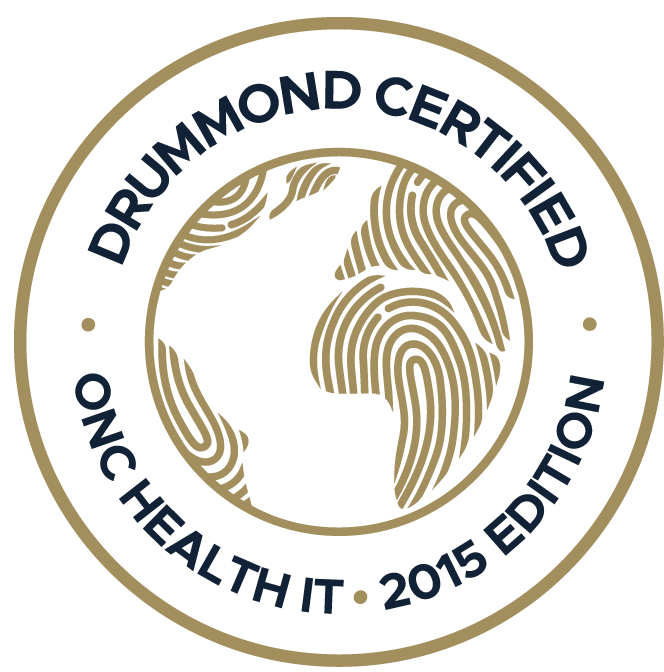Urgent care doesn’t have to mean long waits or crowded clinics. Telemedicine makes care faster, safer, and more accessible, helping providers and patients manage common concerns efficiently.
Have you ever thought about why your practice's revenue is falling behind? You may feel aggravated with unprocessed claims or accounts receivable reports that have existed for too long. Your billing partner may seem responsible, but are there internal processes that could also be an issue?
In most healthcare practices, there is a great deal of confusion and blaming between the billing team and practice staff, eventually leading to poor financial results. This often means both sides fail to communicate properly, which makes the revenue cycle continue to deteriorate. This passive approach does nothing to identify and rectify the source of problems, and revenue continues to be sluggish.
But there’s good news. With three simple changes in reporting and internal processes—using tools like integrated EHR solutions, new technology, and cloud-based EHR software—you can transform your revenue cycle management (RCM) into a well-oiled machine. Keep reading to learn how you and your billing partners can improve RCM and boost your bottom line.
Understanding the Importance of Revenue Cycle Management (RCM)
The financial success of every healthcare practice is mainly based on its Revenue Cycle Management. It entails all stages, right from the patient’s first appointment to their last payment collection.
Smooth RCM ensures that healthcare providers receive payment accurately and on time, thus preventing revenue leaks and unnecessary delays. On the other hand, the absence of a structured and efficient RCM system leads to the loss of substantial revenue, which could have been channeled toward improving patient care or growing the practice.
- What Is Revenue Cycle Management (RCM)?
Revenue Cycle Management (RCM) involves coordinating patient names and other official records with the treatment records obtained by the physicians at the time of their visit. It consists of scheduling appointments, billing, and follow-up, with the aim of having money paid for care provided.
Properly managing RCM processes can improve the practice's financial stability by shortening wait times, limiting claims denials, and speeding up reimbursement.
- Common RCM Challenges Faced by Healthcare Practices
Many practices face problems with delayed payment returns, claim refusals, and patient billing mistakes. These challenges put a brake on cash flow and increase administrative workload. For example, claims are often rejected for simple mistakes in coding or because some patient information is missing.
These minute problems accumulate and hinder the financial growth of practitioners’ businesses. Integrated EHR software such as PracticeEHR can automate much of this entire process, thereby reducing errors and allowing practitioners to concentrate on the core issue: quality care provision. But you don’t have to stress about these problems because, next, we’ll cover how to tackle these RCM issues.
Leverage Key Performance Indicators (KPIs) for RCM Success
To boost the performance of your revenue cycle management (RCM), you must keep track of the relevant key performance indicators (KPIs). KPIs give a clear overview of your billing efficiency, cash flow, and patient payment manners. Here’s how KPIs can help you gain control of your RCM.
- Tracking Claim Denials
Another major KPI is the claim denial rate. When claims are rejected, it means that money will not only take long to get in but may never even reach the practice at all. By tracking denials’ causes, e.g., lack of requisite patient details or wrong coding, doctors can easily detect error-prone areas in their facilities.
The automatic claims tracking and reporting system offered by PracticeEHR helps practitioners quickly recognize recurring patterns that could lead to regular claim rejection and rectify them before they impact their finances.
- Measuring Accounts Receivable (A/R)
Finally, monitoring the age of your accounts receivable (A/R) is also important. A huge portion of your A/R sitting in “over 120 days” can hurt cash flow badly. Analyzing A/R by payer type or denial code helps practices to see where the delays are and take action to minimize them.
With an integrated EHR solution like PracticeEHR, practices are able to produce comprehensive A/R reports that keep in touch with the billing team and management to reduce aging claims as well as maintain financial stability.
Improve Internal Processes to Optimize RCM
This task is quite easy for a practice using an all-in-one EHR system such as PracticeEHR to make this process automatic. So, when something falls through the cracks, the software can track whether or not they received payments on time and check eligibility at the same time.
The ultimate success of your RCM process depends on whether you have accurate data at the beginning stages. Email addresses or sources of referral may seem unimportant but can actually influence the entire scenario. For example, with a patient’s e-mail in hand, medical practices can bill them electronically and send messages through patient portals, which will greatly help lower the number of unpaid bills. Moreover, identifying the origin of your patients, be it through referrals or marketing, provides valuable ideas that can direct forthcoming approaches to patient retention and acquisition.
Keep Patients Engaged for Better Financial Outcomes
Patient engagement goes beyond clinical care—it directly impacts the financial health of your practice. When your patients are actively involved in their treatment plans, they're more likely to keep up with appointments, pay bills on time, and comply with treatment plans.
What this means for you is that medical practices applying this principle will experience better financial outcomes with fewer no-shows, hence stable cash inflows. It’s time to look at patient engagement as a core strategy to level up your revenue cycle management efforts.
- Use Follow-Up Reminders to Drive Engagement
One practical approach is sending reminders of the next phase in a patient’s care plan, which helps keep patients in order and guarantees more revenue down the line. For example, a reminder sent before a patient’s follow-up scheduled to take place after three months will prompt them to book an appointment.
This strategy helps maintain regular visits, which are paramount to sustaining revenue while enhancing patients’ compliance. Luckily, many practices have implemented automated reminder systems through their EHR software, making it easier for them to handle patient follow-ups.
- Leverage Data for Personalized Outreach
In order to customize interactions, it is important to determine when someone last saw the doctor and what the reason was. You can use the data collected in your EHR system to follow up on chronic care check-ups or remind patients to visit once a year. Simple outreach based on a patient’s earlier visits or particular medical conditions may have big effects on the patient’s perception of their value, hence encouraging them to seek further appointments with you.
Practice EHR is one example of an integrated EHR that automates these notifications, thus saving time for your staff while making sure that more patients return and more money enters your pockets.
Practice EHR: Optimize RCM, Collect More Money & Grow Your Practice!
Practice EHR is changing the game in revenue cycle management for healthcare practices of all sizes. The solution allows practices to integrate patient scheduling, billing, and claims management in one place as a cloud-based EHR solution. Therefore, whether it is a small practice or a big growing healthcare organization, the tools provided by Practice EHR are important in trying to improve efficiency and revenue collection.
Practice EHR gives you the power to be your own biller. What’s more, leveraging the right technology with EHR platform integration can simplify patient data management, provide convenient payment methods, and deliver an improved overall patient experience. Ready to level up your revenue cycle management? Request a free demo today!
Topics: Integrated EHR, Small Practice, EHR Solution, New Technology, Cloud-based EHR, Revenue Cycle Management, Medical Billing, Practice Automation, RCM
RECENT POSTS



TOPICS
- EHR Solution (193)
- EHR (127)
- digital age (120)
- Patient Care (117)
- Medical Billing (112)
- Specialty-Specific EHR (112)
- Industry Update (98)
- Technology in Healthcare (84)
- EHR Features (79)
- Small Practice (78)
- Medical billing services (74)
- Integrated EHR (64)
- RCM (64)
- HIPAA Security (62)
- Cloud-based EHR (44)
- New Technology (44)
- Telemedicine (44)
- Healthcare Office Management (40)
- Practice EHR News (38)
- Kiosk (31)
- Revenue Cycle Management (28)
- AI Solutions (25)
- ePrescribing (21)
- AI Scribing (17)
- Best EHR Software (17)
- Practice Management Software (13)
- AI-powered Medical Billing (12)
- EMR (12)
- TeleVisit (12)
- AI EHR (11)
- Practice Automation (11)
- AI Scribe (10)
- Client Favorites (10)
- The ONE (10)
- Switching to New EHR (9)
- Urgent Care (9)
- AI scanning (8)
- Best EHR Practice (8)
- EHR Integration (8)
- MACRA/MIPS (8)
- Patient Portal (8)
- Psychiatry EHR (8)
- Automated Health Tools (6)
- E-Prescribing (6)
- Medical Practice Management Software (6)
- Product Updates (6)
- events (6)
- MIPS (5)
- Mobile EHR (5)
- Telehealth Platforms (5)
- Family Medicine EHR (4)
- HIPAA (4)
- Insider (4)
- Integrated Practice Management (4)
- Internal Medicine EHR (4)
- MIPS Reporting (4)
- Multilingual AI Scribe (4)
- Orthopedics EHR (4)
- Podiatry (4)
- Podiatry EHR (4)
- Regulatory Updates (4)
- Telehealth Platform (4)
- Automated EHR (3)
- Chiropractic EHR (3)
- Digital Experiences (3)
- EHR Flaws (3)
- EHR Implementation (3)
- EHR for Chiropractors (3)
- EHR for Small Practices (3)
- Eligibility Verification in Medical Billing (3)
- Medical Coding Services (3)
- Patient Check-in Kiosk (3)
- PracticeEHR GO App (3)
- Cash Flow (2)
- Cashless Payments (2)
- Clearinghouse (2)
- Dermatology EHR (2)
- EHR Scheduling (2)
- Family Medicine (2)
- Foot and Ankle Care (2)
- Foot and Ankle EHR (2)
- Health records 101 (2)
- Healthcare Compliance Certification (2)
- Medical Billing Partner (2)
- Medical Credentialing (2)
- Pediatrics EHR (2)
- Quality of Patient Care (2)
- Reporting Under MIPS (2)
- Risk and Liability in Medical Settings (2)
- Voice-Activated AI Scribe (2)
- What Works Clearinghouse (2)
- ACA Subsidy (1)
- AI Scan (1)
- AI Scribe for Pediatric Care (1)
- Bariatric EHR (1)
- Behavioral Health Practices (1)
- Billing Communication (1)
- Billing for Private Practices (1)
- Cardiology EHR (1)
- Charting (1)
- Data Security (1)
- Dos and Don'ts (1)
- EHR Dashboard (1)
- EHR Guides (1)
- EHR KPIs (1)
- EHR Questions to Ask (1)
- EHR Transition (1)
- EHR for Chronic Illness (1)
- EMR vs EHR Difference (1)
- ENT EHR (1)
- Endocrinology EHR (1)
- Gastroenterology (1)
- Gastroenterology EHR (1)
- General Surgery EHR (1)
- Geriatric AI scribe (1)
- Geriatrics EHR (1)
- Guides (1)
- Healthcare Practice Office Management (1)
- Help Center Videos (1)
- Insurance Reimbursement (1)
- KPI (1)
- Key Performance Indicators (1)
- Lab Processing (1)
- MACRA (1)
- Nephrology EHR (1)
- Neurology EHR (1)
- Pain Management EHR (1)
- Patient Behavior (1)
- Pediatric Care (1)
- Physical Therapy EHR (1)
- Practice Cash Flow (1)
- Practice Efficiency (1)
- Pulmonology EHR (1)
- Reconsider Your EHR (1)
- Simplify Practice Management (1)
- Staffing in Healthcare (1)
- Switch Medical Billing Providers (1)
- Urgent Care Medical Billing (1)
- Urology EHR (1)
- insurance claim denials (1)








